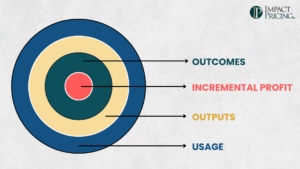Price segmentation is an incredibly powerful way to capture more value from differing levels of willingness to pay among your customers. Today, we’re going to look at a price segmentation method by Coca Cola – the technique itself is brilliant, but the execution was not.
This 2005 New York Times article describes the method: Coke created vending machines with the ability to test the outside temperature – so on hot days, a can of Coke cost more than on cold days. This price segmentation is superb, and we can see why when we look at the two steps of price segmentation:
- Segment the market. Obviously, people are willing to spend more for a can of Coke on a hot day than on a cold day. Notice the segmentation doesn’t necessarily have to be different people. In this case, each person’s willingness to pay changes with the weather.
- Create a pricing mechanism. Coca Cola created smart vending machines to sense the outside temperature so the prices could be adjusted accordingly. Simple and perfect.
A Poor Pricing Segmentation by Coke
So, how did they falter in the execution? The first sentence in the article reads, “Remember the plan to charge more for a Coke on a hot day?” Ouch. This sentence is the problem. They charged more for a can of Coke on a hot day. People thought Coke was gouging them – how dare Coke take advantage of me and extract more money just because it’s a hot day.
What they should have done is charge less for a Coke on a cold day. Of course, this is the same thing as charging more on a hot day. However, the difference is the perception of the customer. If Coke is giving me a discount to motivate me to buy on a cold day, that’s a great thing – I feel like Coke is ‘giving back’ to me.
How did Coke not realize this? Not only should their communications and public relations emphasized the discount, but they could also have had an LED display on the front of the vending machines showing something like, “Outside temperature is only 45 degrees. Please enjoy a 10 cent discount on us.” After all, everybody loves a discount.
Almost all price segmentation should be done by setting a standard price (the highest price) and then offering discounts from there. And this case is no exception. By ignoring this small detail, Coke was ridiculed, they lost some brand equity, and they weren’t able to fully implement and benefit from this price segmentation.
The action you can take today.
People love discounts – memorize and internalize this fact. People hate surcharges. If you are going to charge different prices for the same thing (which you should try to do), always make your highest price the standard price, and offer discounts from there. Have you started price segmentation yet? Are you using discounts? Let us know your thoughts in a comment.















